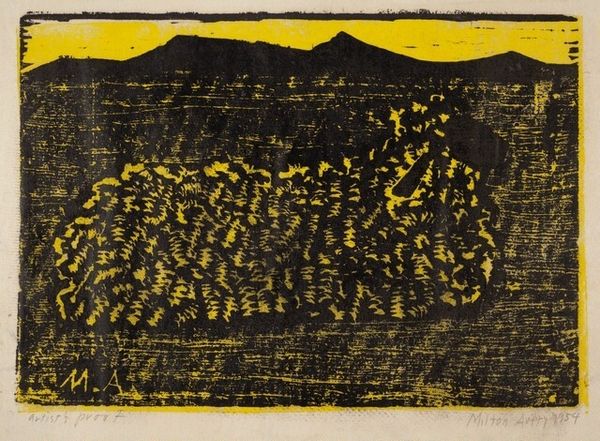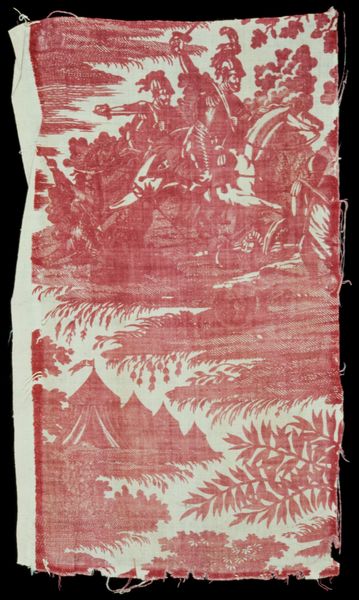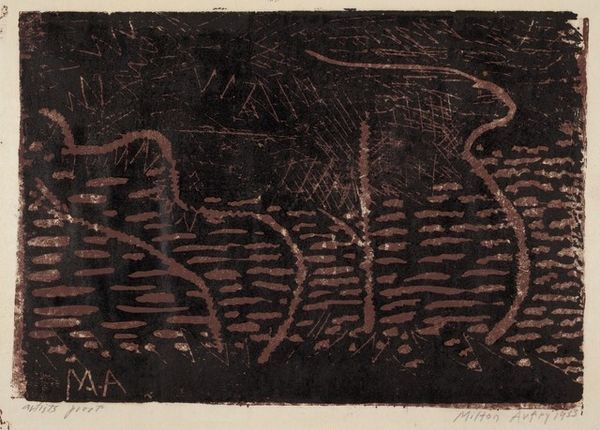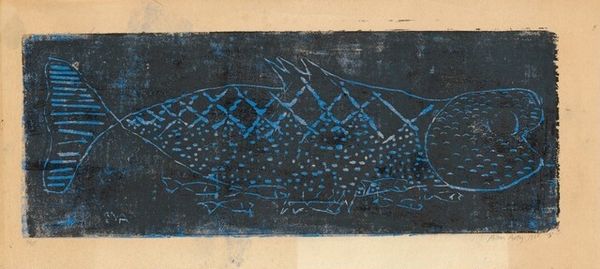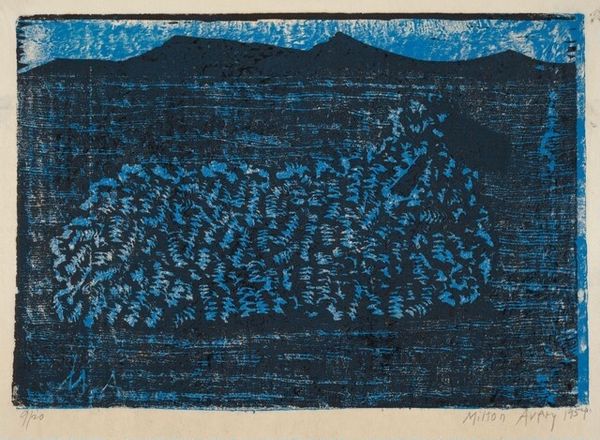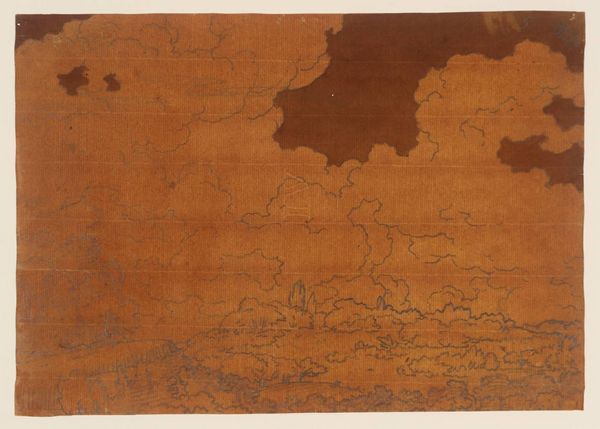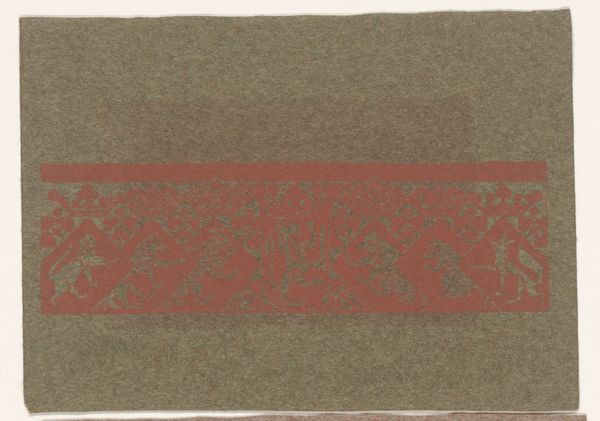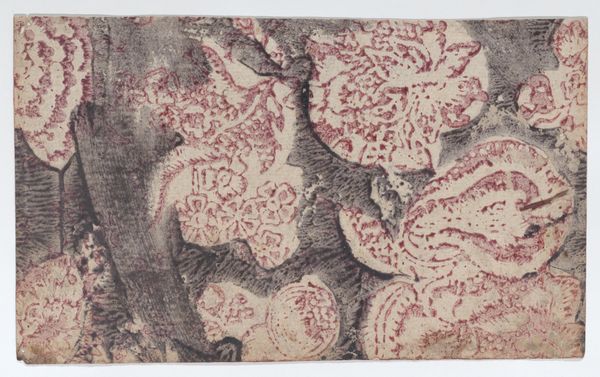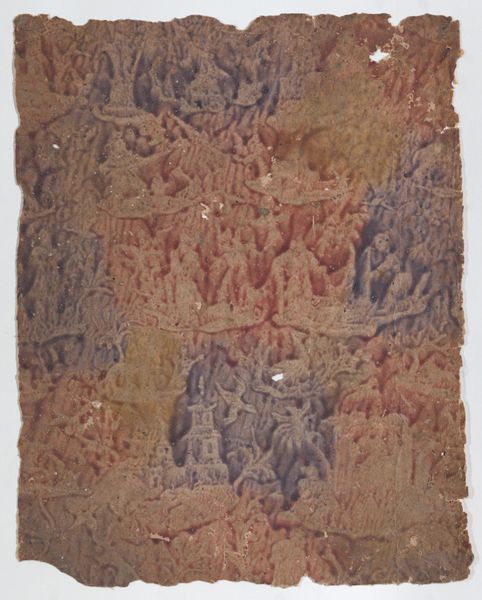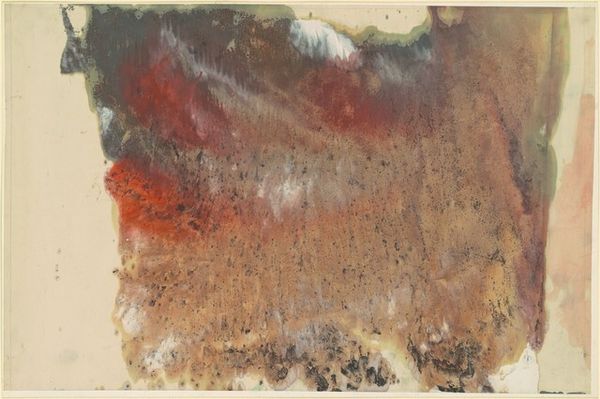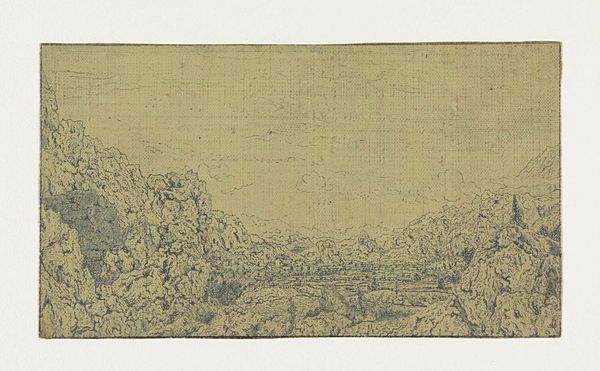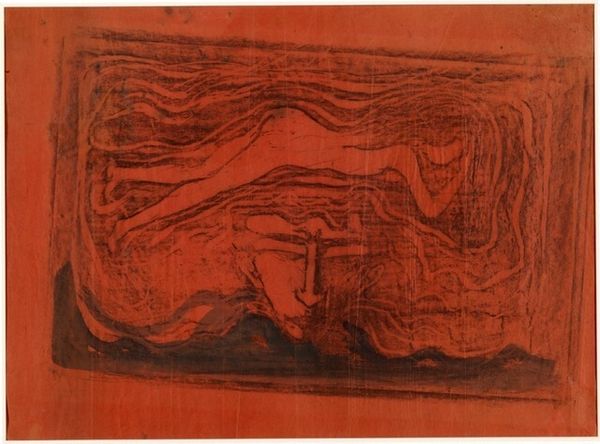
print, woodcut
#
abstract painting
# print
#
landscape
#
woodcut
#
mixed media
#
modernism
Dimensions: image: 25 x 36 cm (9 13/16 x 14 3/16 in.) sheet: 30 x 45.3 cm (11 13/16 x 17 13/16 in.)
Copyright: National Gallery of Art: CC0 1.0
Curator: Milton Avery's "Lamb," a woodcut from 1954. I’m drawn to its rough-hewn texture. Editor: My first thought is primal—something ancient. The black and red palette and those jagged mountain shapes… It evokes cave paintings or maybe a scorched landscape. Curator: I see what you mean. The abstract rendering of the lamb itself, it’s almost a topographical map—like the fleece has become a whole landscape, full of peaks and valleys. It's more about the essence of "lamb" than a literal representation. Editor: Exactly. Lambs, symbolically, represent innocence, sacrifice. Seeing it so starkly represented here feels potent, less about gentleness, and more about something profound, a deeper narrative about nature's harsh beauty. Avery’s simplification gets straight to the symbolic core, it amplifies it. Curator: Absolutely. Avery uses flattening techniques here, influenced by modernism; this lamb merges with the landscape around it—red blending seamlessly with the dark undergrowth. The way the woodcut process itself yields these gritty textures –it’s really a powerful choice that merges style and message perfectly. Editor: I'm stuck on the two-color choice, actually, as a nod to cultural memory – it calls forth creation myths or times of great upheaval with the sun blotted out of the sky and of primal battles over resources. There is no pastoral tranquility here at all. Curator: It's the way the familiar image of a lamb challenges preconceived notions. That really sticks with you, that interplay. Editor: This has shown me that symbols change according to the style and mood – so the visual treatment has to keep changing, too. I wonder where these primal representations may take us next.
Comments
No comments
Be the first to comment and join the conversation on the ultimate creative platform.
